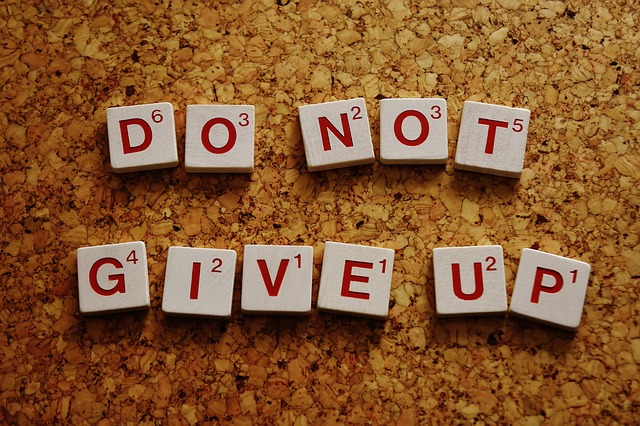Diana Winston recently offered a meditation on the topic of mindfulness and intentions. Diana is Director of Mindfulness Education at MARC, UCLA and the meditation was part of the weekly meditation podcasts offered by the Center. The podcasts are accessible from the MARC website or via the UCLA Mindful App.
Diana explained that an integral part of mindfulness is curiosity about our self, what we do and why we do it. Many times, our intentions are not conscious – our thoughts and behaviour are often the result of habituated patterns. We might sometimes do things because we think it is the “right thing to do” or because “others are doing it”. As Diana points out, our motivations and intentions are often very complex, mixed in nature and not easily untangled. She offers a guided meditation to unpack these motivations and, in particular, to explore the question, “Why do we meditate?” If we are clear about the benefits that accrue for meditation practice, we are more likely to sustain the habit of meditating. I find, for example, that clarity about my motivations is a key strategy for enabling me to sustain my practice of Tai Chi and writing this blog.
Meditation on intentions
Diana provides a meditation on intentions that has four key phases:
- Body scan – you begin by undertaking a comprehensive body scan, starting with the sensation of your feet on the floor and moving through your whole body. I find that a body scan is easier to do if you are following the instruction of another person rather than if you try to do it under “your own steam”.
- Exploring why you meditate – what is it that keeps you going with meditation? What are the benefits that you experience? The clearer you can be about the personal benefits for you – the intentions that shape your habit – the more likely you are to sustain the practice through difficult times or when you are time-poor.
- Grounding through your anchor – revisiting your personal anchor can help you to maintain your focus when negative thoughts or other distractions take your attention. Your anchor can be your breath, focusing on sounds in the room (such as room tone), or getting in touch with a sensation in your body, e.g. the tingling when your fingers touch (my favourite).
- Exploring why you do other activities – now you shift your attention to something else in your life to focus on your intention in doing that activity. You can focus on a major activity that you regularly undertake and ask the fundamental question, “What am I doing this for?” Alternatively, you can focus on a less significant activity that you want to gain some clarity about – it might be a commitment or task that you no longer want to undertake but continue to do so. Diana cautions not to let yourself become frazzled if you cannot immediately find a focus for this phase of the meditation – you can always revisit the meditation at another time. She also suggests that a few deep breaths taken during this part of the exercise can be helpful for finding and sustaining your focus.
Motivation for meditation
When I undertook this meditation, I was pleased that I was able to clarify and strengthen my motivation for persisting with regular meditation practice. I was able to identify the following intentions behind my practice (you may have very different intentions based on your own life experience):
- Achieving calm – this is a key aspect of my intentions in meditation practice. I find that calmness enables me to deal with the stresses of life and the inevitable traumas that I experience. At the end of a recent workshop that I was co-facilitating, a participant came up to me and thanked me for my “calmness and creating a calming atmosphere”.
- Developing creativity – meditating releases my capacity to be creative in my writing and in designing and facilitating workshops for managers and leaders.
- Dealing with difficult emotions – there are several meditations that focus specifically on difficult emotions such as resentment or anger. These meditations help me to temper the emotion and contribute to restoring my equilibrium.
- Reducing reactivity – there are so many things in life that can trigger a reaction, e.g. traffic jams, and I can become less reactive through my meditation practice (especially targeted mediations such as “You are traffic too” and “When you are waiting, have awareness as your default, not your phone”). Now in traffic delays, I am able to revert to my anchor, fingers touching, to remain calm and increase my awareness.
- Improving relationships – meditation helps me to be more conscious of my thoughts and emotions in any interaction and assists me to be sufficiently present to actively listen to others I interact with, especially in close relationships (even if I don’t achieve this very well in a particular interaction, my awareness and reflection help me to resolve to do better the next time). Awareness of my own thoughts and emotions improves my capacity to understand the dynamics occurring in my training groups.
- Health and healing – meditations focused on nature support my emotional stability and contribute to my overall wellness.
Reflection
As we grow in mindfulness through meditation and reflection, we can develop greater clarity about the intentions behind our meditation practice and other significant activities in our life, sustain our motivation and enjoy the benefits that accrue both to ourselves and others we interact with. We can begin to more fully realise the benefits of increasing inner and outer awareness. Meditation focused on our motivations and intentions can help us to make explicit the implicit motivation behind our actions and, in the process, to strengthen our motivation.
____________________________________________
Image by Alexas_Fotos from Pixabay
By Ron Passfield – Copyright (Creative Commons license, Attribution–Non Commercial–No Derivatives)
Disclosure: If you purchase a product through this site, I may earn a commission which will help to pay for the site, the associated Meetup group and the resources to support the blog.









